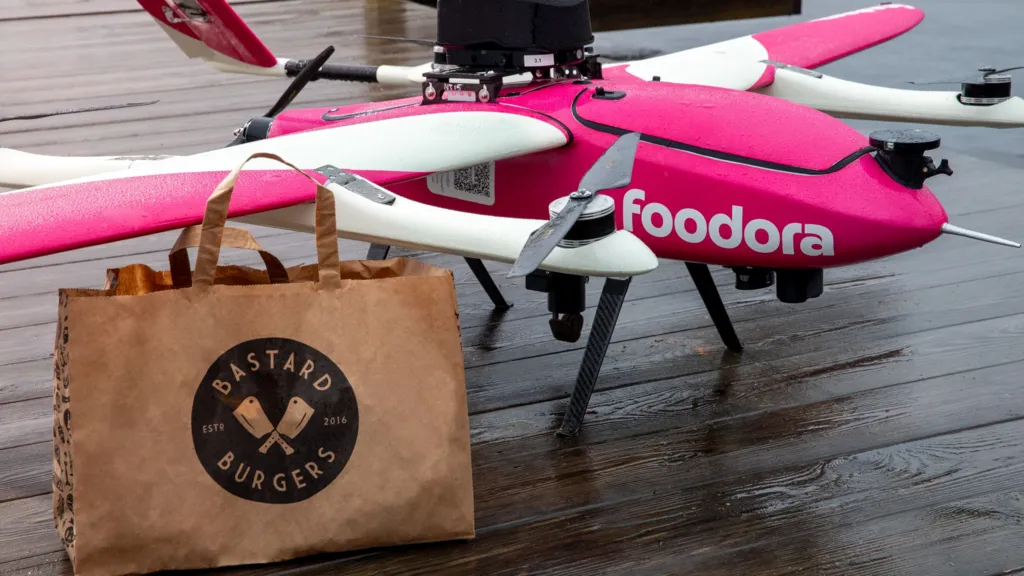Will Drones Deliver Your Next Hot Meal?

For many city dwellers, hot food delivery is just a tap away. But for those living in remote or hard-to-reach areas—especially across the thousands of islands that make up Scandinavia—it’s a service they’ve long gone without. Now, that’s starting to change.
Norwegian drone startup Aviant is working to bring hot food delivery by drone to communities traditionally cut off from such services, starting with a pilot on the Swedish island of Värmdö, located just 13 km (8 miles) from Stockholm.
Closing the Delivery Gap
Despite being close to the capital, Värmdö’s 46,000 residents (which can swell to 100,000 in summer) have had few food delivery options. That’s exactly the kind of gap Aviant aims to fill.
“There are 87,000 people around Stockholm alone who can’t access food delivery services,” says Aviant CEO and co-founder Lars Erik Fagernæs. “These are suburbs where people would love to order takeaway—but they simply can’t.”
Since February, Aviant has been running a beta trial, delivering fresh burgers from Scandinavian chain Bastard Burgers to homes in Värmdö using pink-and-white drones branded by delivery partner Foodora.
Each drone delivery currently carries just 10 meals a week as part of the trial, but the company plans to scale up throughout the year.
A Cost-Effective Solution
One of the biggest advantages? Cost. With no driver needed, drone delivery can be priced similarly to traditional bike or car services, making it viable even for suburban and semi-rural customers.
After fine-tuning flight logistics and thermal containers for three years (Fagernæs jokes about the early days of “soggy fries”), Aviant is confident their drones can deliver hot, fresh food—even in winter.
“People go crazy for it. They call their neighbors and grandma,” says Fagernæs. “They think it’s like a UFO bringing their food.”
Scaling Across Scandinavia—and Beyond
Following success in Sweden, Aviant plans to expand drone delivery to the Norwegian peninsula of Nesodden, just four miles from Oslo—but a much longer journey by road. With this service, another 100,000 people could gain access to food delivery.
Looking ahead, Aviant has identified 40 potential drone bases across Scandinavia and is eyeing international markets with similar geography, such as Canada and the northeastern US, where lakes, islands, and mountains make traditional delivery challenging.
While high winds can ground flights, Aviant expects 90% service uptime.
The Limits of Remote Delivery
Drone food delivery isn’t without its challenges. Aviant previously trialed a drone food delivery service in remote areas outside Trondheim but discontinued it in August 2023. The reason? The numbers didn’t add up.
Remote regions often lack the order volume needed to sustain the high delivery costs without outside funding. Other firms have faced similar issues:
- Skyports delivered school meals to Scotland’s Orkney Islands in 2022, later launching a short-lived “fish and chip Fridays” service.
- Wingcopter in Germany and a council-backed drone program in China’s Zhejiang province both tested rural deliveries—but struggled to make them commercially viable.
Drone Deliveries with Support
Skyports has had more lasting success through its partnership with Royal Mail, delivering parcels across the Orkney Islands since 2023. While the drones are currently restricted to Royal Mail use, Skyports sees future potential in expanding to hot food and retail goods when the drones are not in postal service.
“The more you utilize the drone, the better,” explains Alex Brown, Skyports’ Director. “If you have an anchor customer underwriting the core cost, you can layer on other services to bring in extra revenue.”
Regulation Challenges in the UK
One major hurdle to scaling drone delivery in the UK is airspace regulation. Commercial drone operators must coordinate with the Civil Aviation Authority (CAA) to fly in segregated airspace, ensuring public safety and avoiding collisions.
Although this makes the UK market more complex than in Europe, Asia, or Australia, Brown says the UK government is making progress.
“It is getting easier, and to give the UK government credit, they are making good progress,” he says, noting that rural drone operators can now make a case for flying in low-risk airspace using advanced navigation systems
